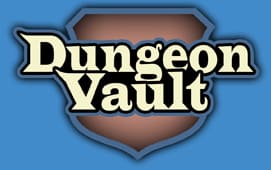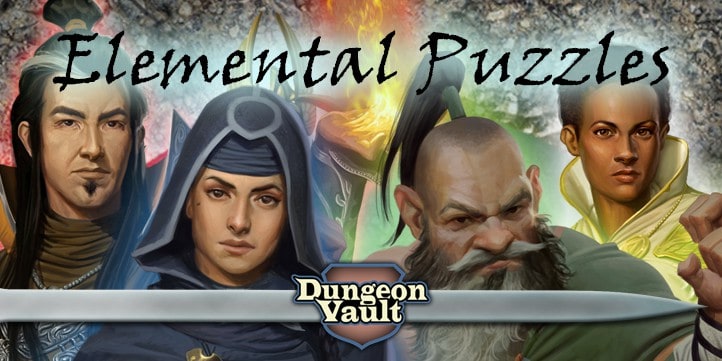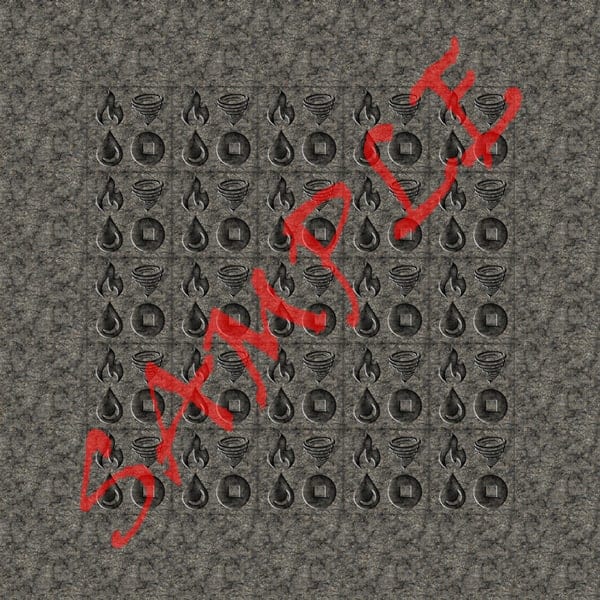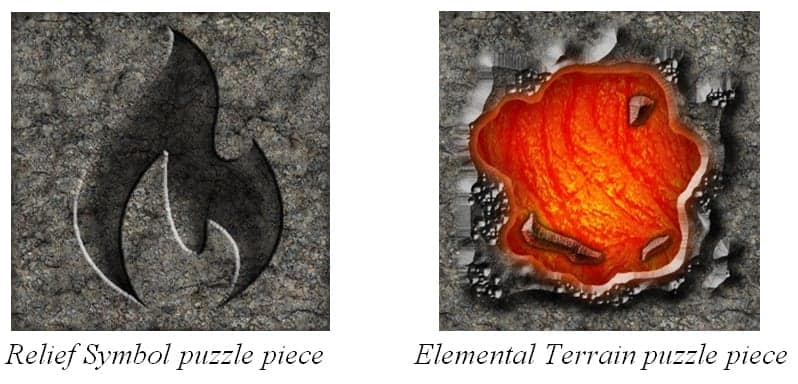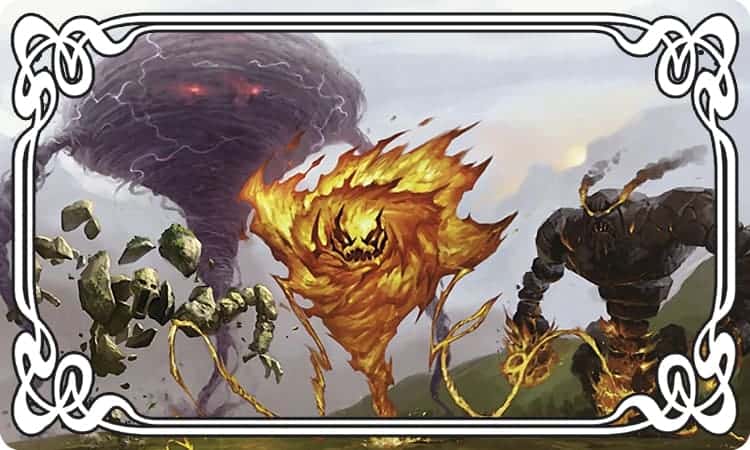
Fire, water, air, and wind are the perfect elements to make up your D&D puzzle. I mean, the elements are everywhere in D&D. There are even whole elemental planes of existence! So introducing elemental puzzles just make sense. But how do you go about introducing fire puzzles, water puzzles, and even an occasional wind puzzle or earth puzzle into your campaign?
There are lots of ways to integrate Elemental Puzzles into your campaign. We’ll first focus on integrating elemental puzzles into your game narratively. In the second part of this article I’ll show you an example of an elemental puzzle.
Updated on 12-23-2022
Using Elemental D&D Puzzles in Your Campaign
In a survey I conducted among 1.000+ players about the D&D puzzles they like most, I found that elemental puzzles ranked in the mid to low region compared to others. It wasn’t a big difference but still. Elemental puzzles have a lot to offer and it makes me wonder if all their benefits have been fully used, because there are so many rich cultural refferences to draw from.
The search for the elements has been a part of a great many different cultures. Cultural symbolism from real life has often evolved over centuries to match our collective subconscious. Creatures drawn from mythology are, for instance, often the most popular among players. When drawing form real life, always be respectful of the original symbolism and belief systems.
Even though cultures are vastly different, their views on elements are often very similar. In most ancient philosophical and religious concepts, elements are the substances or forces from which everything in the universe can be traced.
The Ancient Greeks and the Four Elements

The Greek philosopher Empedocles (c. 490-430 BC) was one of the first to proclaim the theory that all substances were composed of four elements. Later it was believed that the four body fluids (humores) of Hippocrates corresponded to these. He believed that certain human moods, emotions, and behaviours were caused by an excess or lack of body fluids.
| Fire | Blood – Choleric |
| Water | Mucus – Phlegmatic |
| Air | Yellow bile – Sanguine |
| Earth | Black bile – Melancholic |
GMs can tie these four temperaments to the elements in their D&D puzzles or just make up their own connection. But having the elements play such an important part of how cultures in your game view temperament can really add depth to your campaign.
The ancient Greeks also believed that the elements weren’t equal. Each element pursued a place in the universe. Earth was the heaviest element and was therefore also the lowest. Water was the element that strived for a balance that was just above that of the Earth. Air had a place of equilibrium that found itself above it again. Fire, strived for an even higher place of equilibrium and this was expressed by the rising of the flames.
And then there’s a fifth element, not of this planet, called eather that moved the celestial bodies. It could never be reached by a mortal and was predestined for the Gods. (If that doesn’t get your creative juices flowing, I don’t know what will).
Hindu Philosophy and the Four Elements

In Hindu philosophy we also find the four elements and a fifth element representing eather or space. The theory behind the elements is very complex. But one aspect that stood out to me is the connection between the elements and the senses.
| Fire | Comes from seeing. |
| Water | Comes from taste. |
| Air | Comes from touch. |
| Earth | Comes from smell. |
You might want to incorporate these senses into the elemental puzzle. Maybe the air puzzle symbol must be touched, the fire puzzle symbol looked at for some time, and so on. The fifth element is connected to sound.
Buddism and the Four Elements

The Buddha stated that the physical world consists of the following four basic elements.
| Fire | Heat and cold. |
| Water | Adhesion and cohesion. |
| Air | Pushing and repulsion. |
| Earth | Hardness and softness. |
Hopefully these symbolic meanings will spark some ideas of how using elements in your campaign might be imbedded in cultures, belief systems and orders. Maybe the ‘Monks of the Water Tribe’ can stick their opponents to floors and walk on ceilings using their powers of adhesion. Or perhaps ‘Order of the Flame’ can draw heat from objects and transfer it to other objects? These powers could be necessary to solve your earth puzzle or air puzzle in your D&D campaign.
Astrology and the Four Elements for D&D
In western astrology the four elements have been connected to the seasons and celestial signs. If you have your own celestial signs for your D&D campaign world you could use these. And if you don’t, you might want to make them up.
| Fire | Summer | Aries, Leo, Sagittarius. |
| Water | Winter | Cancer, Scorpio, Pisces. |
| Air | Spring | Gemini, Libra, Aquarius. |
| Earth | Autumn | Taurus, Virgo, Capricorn. |
Other Meanings and the Four Elements
The previous information should provide you with some ideas for integrating elemental puzzles and lore into your D&D campaign. Here are some other interpretations taken from literature:
| Air | Fire | Water | Earth | |
| General | Liberty | Desire | Softness | Riches |
| Animal | Eagle | Salamander | Dolphin | Lion |
| Windrose | South | East | West | North |
| Form | Erect ellipse | Triangle | Circle | Square |
| Shakespeare | Thought | Desire | Tears | Flesh |
| Yeats | Rational | Soul | Blood | Instinct |
| Blake | Shame/fear | Blindness | Doubt | Melancholy |
These are just some meanings that can be found when you study literature on the elements to use in your puzzles. Instead of thinking of elemental puzzles as ‘just a puzzle’ it could be a theme that touches every aspect of your campaign world, from temperament, to the senses, to the very nature of reality.
Elemental Puzzles for D&D
As promised, here is my take on an elemental puzzle for your D&D game. I haven’t created a separate fire puzzle, air puzzle, and so on. Instead, I focused on creating one puzzle that uses all four elements.
Elemental Puzzles is available here for those who are interested.
Here’s how it works:
Step 1: Placing the Elemental Puzzle
Elemental puzzles can be placed both onto a stone door or onto the floor of a dungeon or rocky terrain.
If you choose to place the puzzle on a stone door, the players will see a relief etched into the surface of the door like the one on the image below. (Simply narrate that the PCs come to a stone door with elemental symbols and then show them the puzzle. The players will naturally assume they are looking at the door’s surface.)
If you choose to place the puzzle onto a dungeon floor or rocky terrain, show the same image below. This time narrate that the PCs find the relief on the stone floor and PCs will assume they are looking down on a grid. With this setup, the PCs can walk over the puzzle and each square represents a five foot step. (This is especially handy if you’re using a grid with D&D miniatures for combat and movement).
Step 2: Solving the Elemental Puzzle
Each Elemental Puzzle has a central five by five grid surrounded by a border containing clues to solving the puzzle. The rules are as follows:
- Each row and column requires exactly one fire, air, and water symbol.
- Empty squares are considered earth symbols. That is why Elemental puzzles always appear on rocky surfaces. There are always two earth squares in each row and column.
- The clues around the edge of the grid tell the players which fire, water, or air symbol appears first in that direction in that row or column. Earth symbols do not follow this rule because they are empty squares.
For instance, if a row has a fire clue at its border, then the players can deduce that the first square cannot be an air or water symbol. The fire symbol must come before water and air. And the last two squares in the row can’t be a fire symbol because air and water must have space to come after fire.
Share the rules with the players before they try to solve the puzzle. Using the rules and clues players can deduce the position of all fire, water, and air puzzle pieces. Earth puzzle pieces are placed in the empty squares that are left over. Players can use a pencil to cross out the symbols that are false in each square.
If players find the symbol for a square, you have two options:
For stone doors I recommend placing bigger symbols on top of the solved squares that look identical to the clues in the border. This way the entire puzzle appears as a stone relief. If the PCs solve the puzzle, the door opens. Players can use the printable deck of relief symbols in this guide. For virtual tabletop play, use the .jpg images.
For floors I recommend using the more colorful tiles in the printable deck of elemental terrain. (or .jpgs for VTT play). With these tiles the terrain magically changes to match the correct symbol. And this change of terrain also transforms the puzzle into an interesting encounter area.
Step 3: Adding a Combat Encounter
If the players solve the floor puzzle, a door opens, a portal is revealed, or a treasure chest appears. You choose something that happens which will allow the players to continue on their quest. Alternatively, you can introduce a combat encounter before players are allowed to continue.
By solving the puzzle the players have already laid out an interesting floor grid that you can use for a combat encounter.
Of course, fighting between all of those different elements in a dangerous business. Each square should have an effect. You can choose your own effect, but here are some examples:
- Earth puzzle piece: No effect, just plain floor.
- Fire puzzle piece: Anyone entering this square takes X damage each round until they enter a water square.
- Water puzzle piece: Difficult terrain.
- Air puzzle piece: Anyone entering this square is pushed one square in a random direction. Roll 1d8 to determine the direction.
Step 4: Changing Puzzle Squares
How do PCs change puzzle squares? One method could be to simply scratch out wrong symbols with a piece of chalk. If there’s one symbol left that will magically transform into either a bigger symbol or the correct floor tile.
A more exciting option is to give the players an elemental wand that changes the terrain. If you find such a magic item too powerful for your D&D game, you could state that it only works in the elemental grid. Because the pack contains 30 puzzles, players will be solving more of them throughout your campaign. So carrying around a magic item that allows them to do that adds to the immersion. I’ve included an image of the ‘Elemental Wand’ in the pack.
If you are playing in a Tolkienesque Middle-earth like world, then you are probably aware that the Elves only received three Rings of Power representing fire, water, and air. In the elemental puzzle the earth is represented when the other three elements are absent. So in that regard the puzzle matches this setting nicely. (And no, that’s not a coincidence.)
Of course, you can set all kinds of conditions for changing puzzle squares from touching the right symbol to placing the correct fluid on the square as we’ve discussed in the first part of this article.
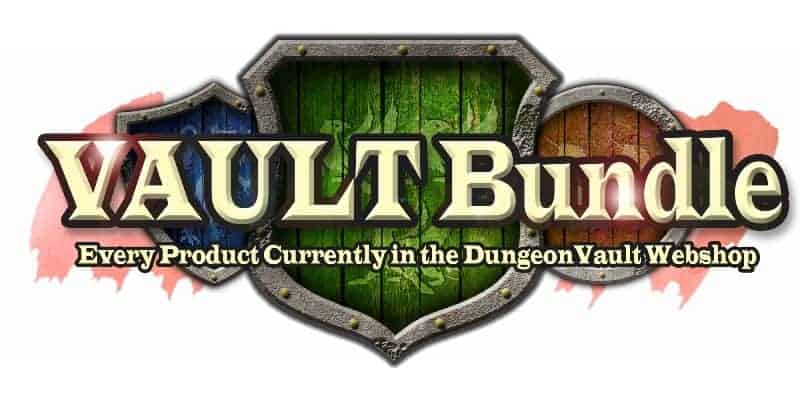
By: Paul Camp
Image credit: WotC
